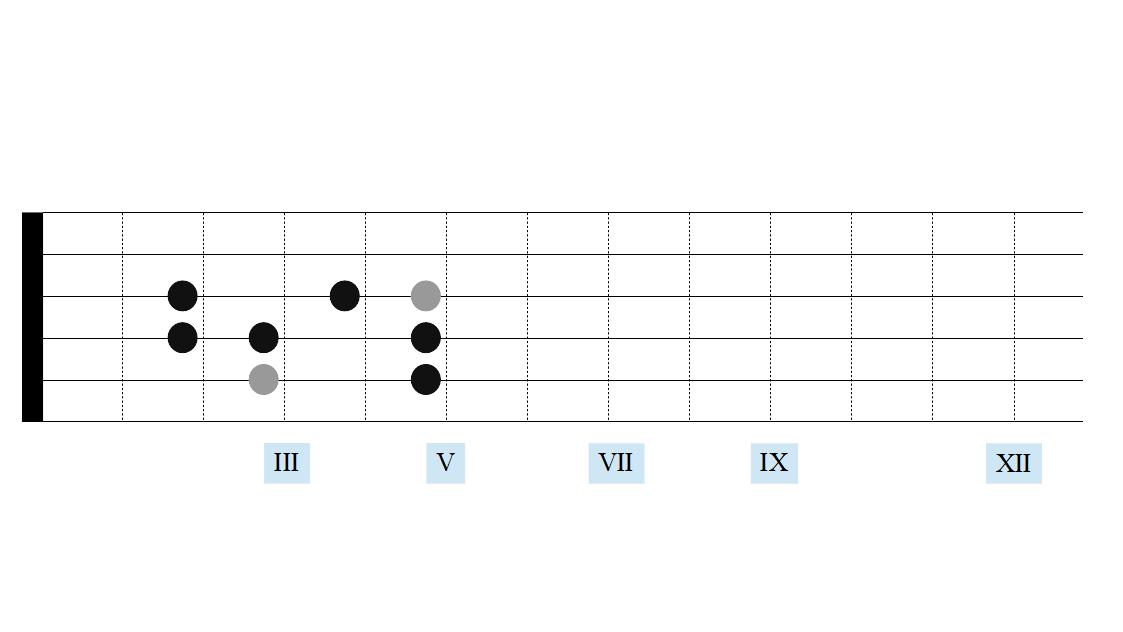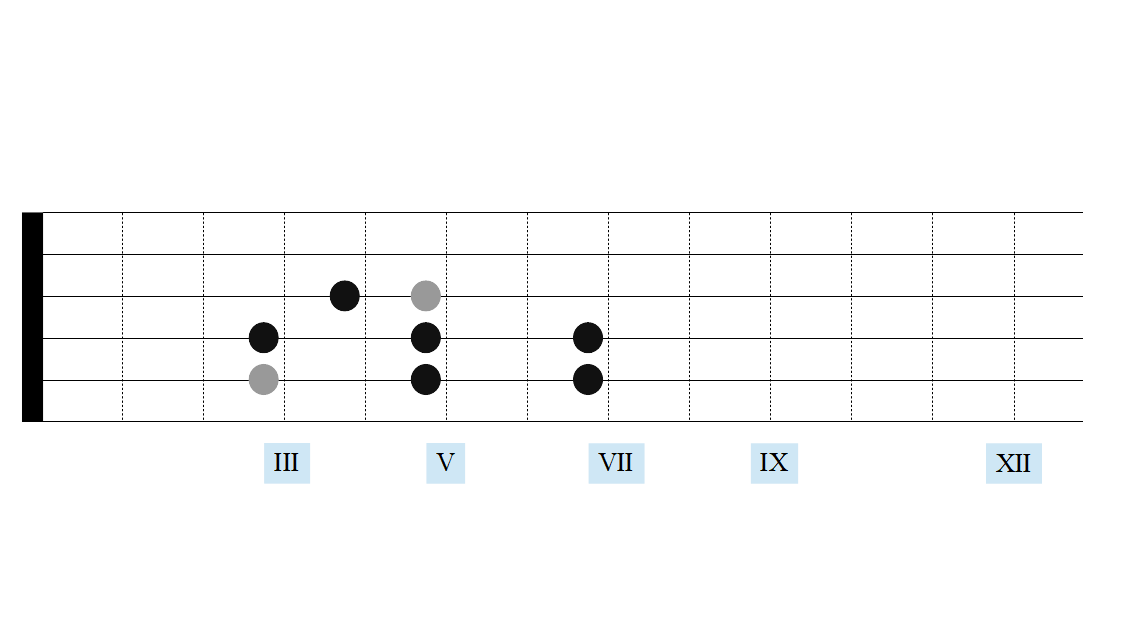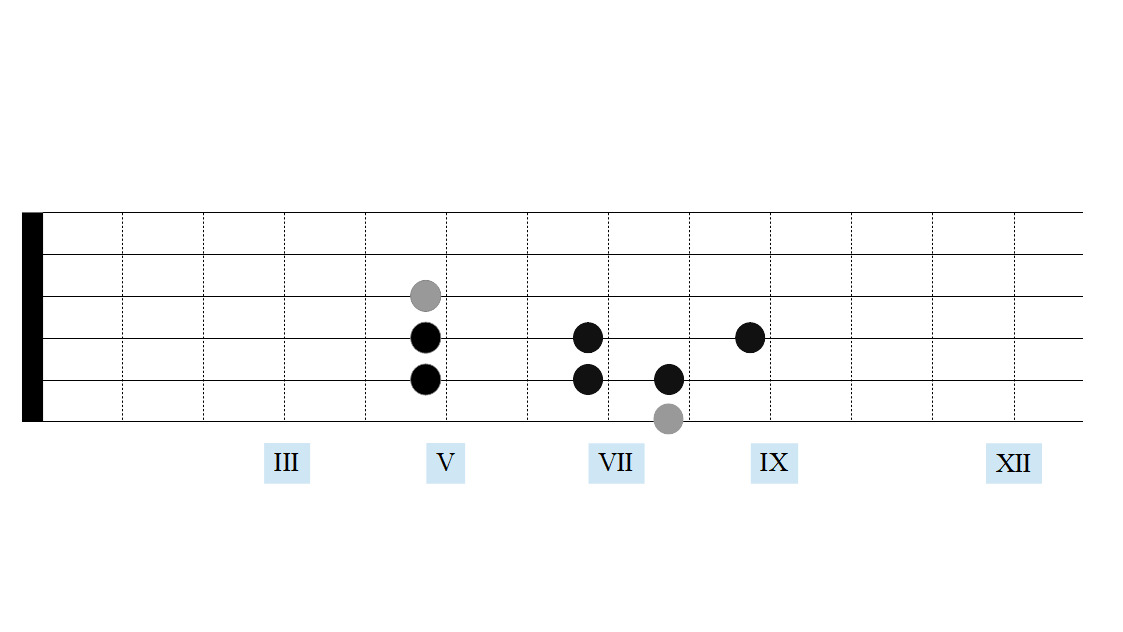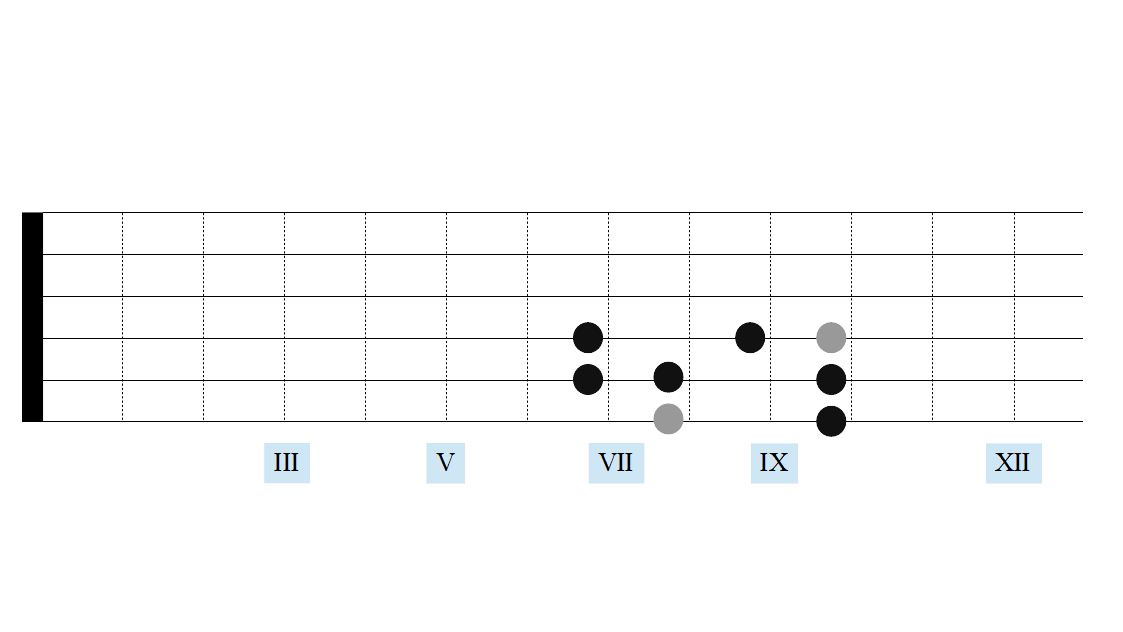FERTBOARD ARCHITECTURE
After becoming familiar with the scales in the first position, the next goal is to extend this knowledge to the entire fretboard. Before you learn different systems such as the “five positions”, “seven positions” or “CAGED”, it makes sense to think about the architecture of the fingerboard:
- The four fingers of the left hand play different notes on different strings.
- If a consistently rising (or falling) sequence of tones is to be played, different fingers are used to play fluently.
- The strings are changed in such a way that the hand position stays “in one position” as much as possible.
- This results in so-called “fingerings” or scale patterns.
THE APPLICATION

Following this train of thought, the C major scale from the example above can be transferred to the fretboard in four different ways without playing an open string:
- Starting point index finger in the III. position
- Starting point middle finger in the second position
- Starting point little finger in V. position
- Starting point index finger in position VII (identical fingering to #1)




Observations
The form of the resulting scale diagrams largely depends on the “starting finger”. The fingerings can be reproduced in every position, since the frets are always spaced a semitone apart and the strings are always spaced a fourth apart. The only and important exception is the transition from the G to the B string, which forms the interval of a third.
THE PRACTICE PLAN
These scale diagrams form the basis of the connections on the fretboard. They should first be worked on from the root on the E and A strings up to and including the G string.
- Choose any root and key, for example: D minor.
- Work out the fingerings with the fundamental tones on the E and A string up to the 12th fret.
- Repeat the process with another key.
In the next step, the fingerings can be combined over two octaves. In this way you develop a solid, root-centered understanding of the fretboard and arrive at the same fingerings as in the known systems, but with a better overview of details.
In the following PDF you will find the fingerings over one octave and the overview of the full 5 positions (CAGED).